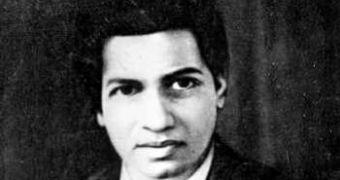Back in the 1920s, an Indian mathematician named Srinivasa Ramanujan ended up coughing out several mathematical functions nobody had ever seen or even heard of before.
This “natural genius,” as people used to refer to him and still do, detailed his deathbed maths theory in a letter he sent to G. H. Hardy, a renowned English mathematician who also served as his mentor.
For many years to come (almost 100, to be more precise), several other geniuses spent countless hours trying to figure out what said mathematical functions were all about and whether Srinivasa Ramanujan letter was mere gibberish or something worthy of consideration.
The functions outlined by this genius are strikingly similar to theta functions and modular forms, yet behave like neither of them, scientists explain.
This past November, during the Ramanujan 125 conference at the University of Florida, it was revealed that this Indian mathematician knew exactly what he was writing about, and that this deathbed theory might help better explain the behavior of black holes.
Interestingly enough, mathematicians had to make use of modern theories and tools in order to explain Ramanujan's formula.
Daily Mail quotes Ken Ono, a Emory University mathematician, who recently stated that, “We've solved the problems from his last mysterious letters. We proved that Ramanujan was right.”
Said researcher further elaborated on this issue as follows:
“No one was talking about black holes back in the 1920s when Ramanujan first came up with mock modular forms, and yet, his work may unlock secrets about them. Ramanujan's legacy, it turns out, is much more important than anything anyone would have guessed when Ramanujan died.”
After writing down said mathematical functions, Srinivasa Ramanujan claimed that they were sent to him in a dream by the Hindu goddess Namagiri.

 14 DAY TRIAL //
14 DAY TRIAL //